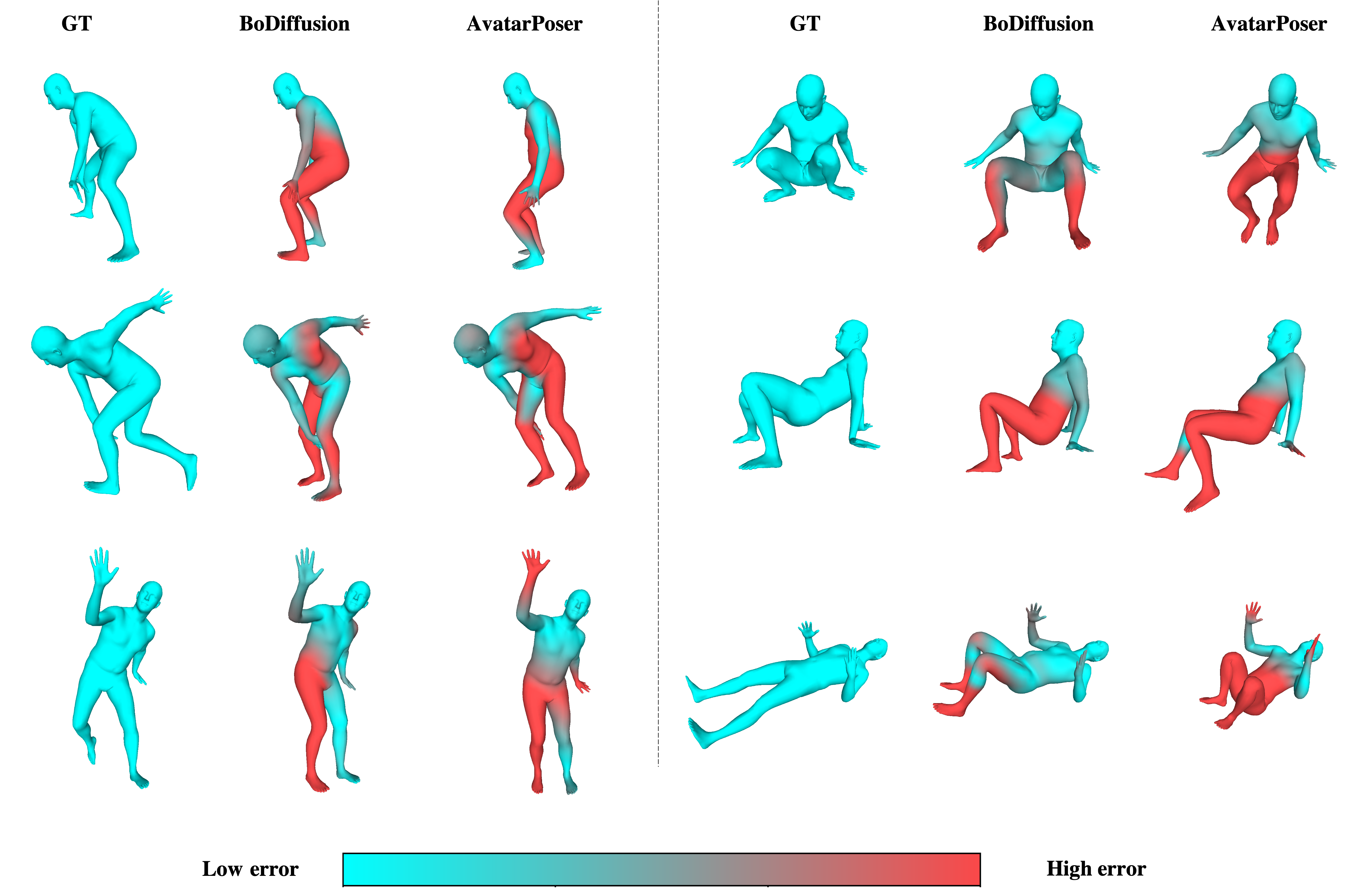BoDiffusion
Architecture
BoDiffusion is a diffusion process synthesizing full-body motion using sparse tracking signals as conditioning.

Denoising Steps
During inference, we start from random Gaussian noise and perform T denoising steps until we reach a clean output motion.

BoDiffusion synthesizes substantially more accurate and plausible full-body poses, particularly in the lower body where no IMU data are captured.

More Examples
Unconventional Poses
BoDiffusion predicts plausible poses even for uncommon movements like crouching or lying down.

Error on individual poses
BoDiffusion predicts poses with higher fidelity to the ground truth. In contrast, AvatarPoser struggles to predict accurate lower-body configurations.
